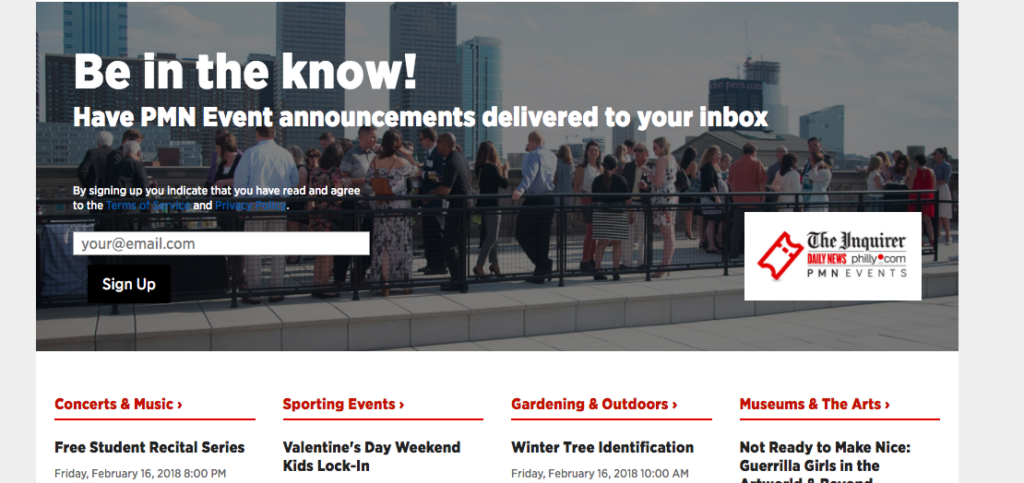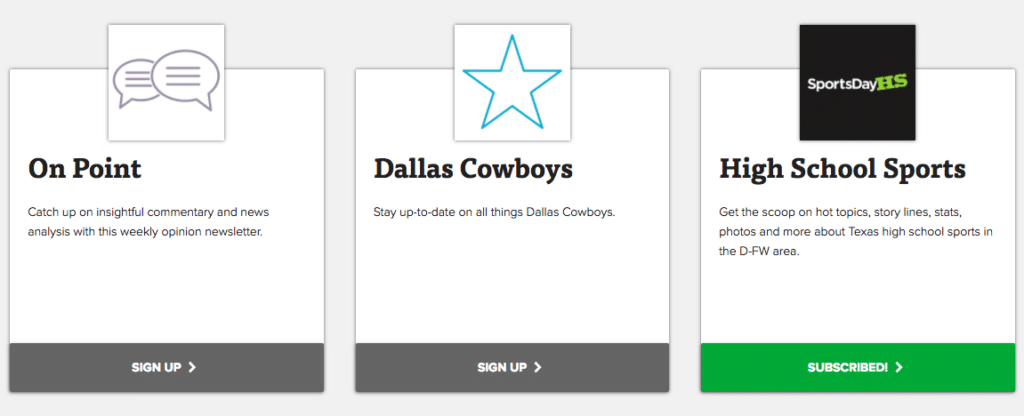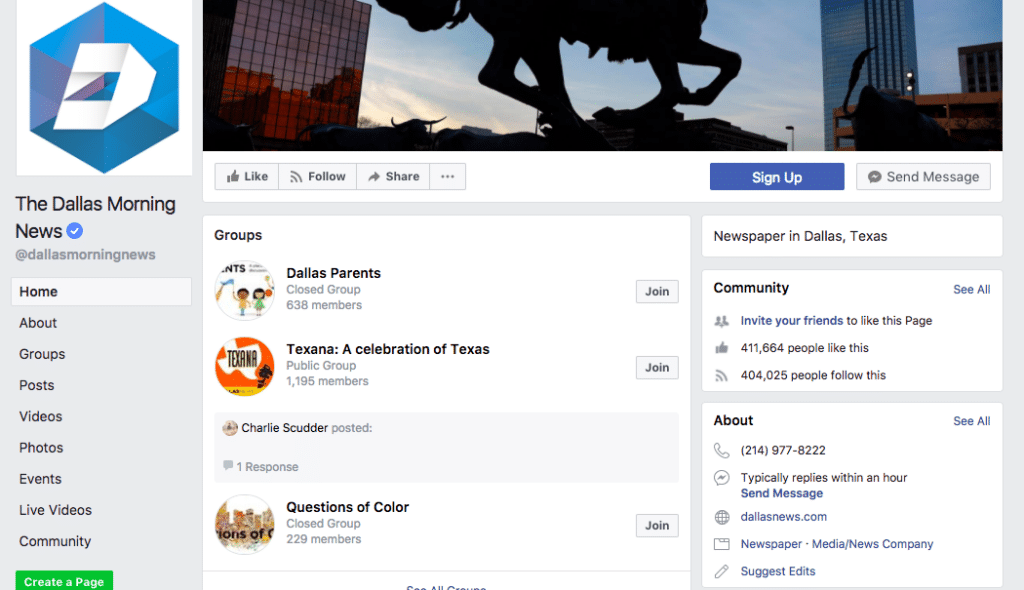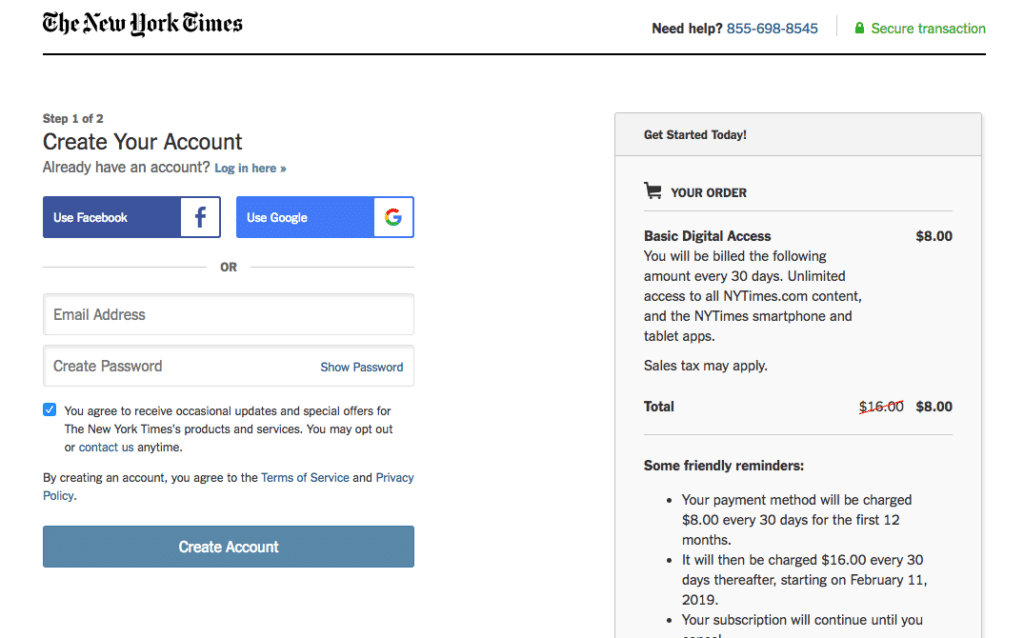Nothing is more important to the brave new world of building subscriptions than the relatively old world of email.
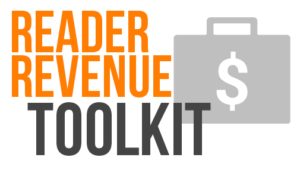 An email address gives publishers ways to target and connect with potential subscribers that are much more effective than metrics like “unique visitors,” a potentially misleading number due to the fact that the same person may be counted as different users.
An email address gives publishers ways to target and connect with potential subscribers that are much more effective than metrics like “unique visitors,” a potentially misleading number due to the fact that the same person may be counted as different users.
Email is also a one-to-one interaction, unlike social media, that is private and personal. It is easy to tailor, test and track; which lends itself to ongoing improvements and insights. Email products such as newsletters build loyalty and correlate more strongly to converting new subscribers than any other medium.
Here we’ll outline proven tactics and best practices publishers have used to persuade audiences to provide their email addresses and ultimately pay for content. These approaches can be adapted to best meet the needs of your organization and audience.
Approaches for acquiring email addresses
Use on-site promotions and widgets
What are the best approaches for acquiring email? Several tactics stand out, from offers to sign up for newsletters, news alerts and information about events, to registering for access to more news.
A key advantage to collecting email addresses within your own news products is the freedom you have to track the performance of each method you use. The various placements on a website, the terms of an offer, messaging and other details are all testable and can be analyzed.
Alerts about local events: The Philadelphia Media Network
The Philadelphia Media Network (which publishes the Philadelphia Inquirer and Daily News) encourages readers to sign up for email alerts about local events.
An aspect that works well is the “Be in the know!” headline, which grabs attention and assures readers they will stay informed about what’s happening in their community. The Philadelphia skyline also reinforces that sense of place you get from being part of the community.
One particular strength of this example is the clean and easy registration process, which requires only one field (email address) to complete. The simplicity makes it more likely a reader will finish the form. And it underscores a decision publishers face about how much information to seek from audience members. Email alone does not reveal much about the reader. It also may be helpful to request data like name, zip code and interests. But the more fields a reader is asked to fill in, the less likely he or she will complete the form.
It’s a tradeoff: You may get more registrations by asking only for email, but they may be a less engaged audience that does not convert to paying customers at a high rate. With more fields to complete, the overall volume of registrations may be lower, but their level of engagement may be higher.
Which approach is better? There is no simple answer. Publishers should test different approaches to decide which techniques work best for them in the long run.
News alerts: The Incline
News alerts are a proven way for readers to access content and deepen their relationship with you. These alerts can be topic-based on an area of ongoing coverage, or more seasonal, like around an election or time of year. The Incline, a digital news startup in Pittsburgh, even has alerts that ask readers to contribute to content, such as by asking questions or nominating “favorites” in designated categories, a strategy that increases overall engagement.
 The Incline takes a pared-down, minimalist approach to asking readers to sign up for alerts; resembling the editorial content on the rest of the page and not a typical banner ad.
The Incline takes a pared-down, minimalist approach to asking readers to sign up for alerts; resembling the editorial content on the rest of the page and not a typical banner ad.
The news alert topics are aligned with the Incline’s brand, which strives to be an authentic voice for Pittsburgh and its residents (current and former). Topics range from election updates to Peculiar Pittsburgh, which is a community-driven reporting project that answers questions about what makes the city’s culture unique.
Layouts that invite sign-ups: The Philadelphia Inquirer and Dallas Morning News
Both of these publishers use similar layouts for newsletter registrations. They have a clean, easy-to-read format that makes signing up for their topic-based newsletters fast and easy. The options are laid out in an easy-to-scan grid pattern. The photos that the Inquirer uses to show newsletter topics are engaging and draw readers in; while the Morning News uses simple graphic icons.
These layouts are a great way to show all newsletter options, and display deep coverage in topic areas like sports, dining, business and commentary.
As API has seen in our research, The 9 Paths to Subscription, one group of news subscribers is highly motivated to pay for content by coverage of a certain topic that is important to them. A great way to engage these “Topic Hunters” is through topic-based email newsletters.
Use social media as an entry point for new subscribers
You can use social media to introduce readers to your content and specific coverage areas that may interest them, with the goal of driving them back to your website, where they can sign up for a newsletter or register for an account or an event.
Creating Facebook Groups: The Dallas Morning News and USA Today
These two publishers use Facebook Groups as well as their Facebook pages to encourage registrations and invite readers to join specific groups of interest. According to API’s Paths to Subscription study, this kind of approach is especially effective with many social media enthusiasts who may be influenced to subscribe by friends and family.
Which types of Facebook Groups resonate with different audiences or in different markets may differ greatly, so it is important to monitor not only the number of users who sign up for a group, but how they engage with it — how many of the users are active after they join and how their participation changes over time. If the the group is exclusive for subscribers or members, do they consider it valuable and is it contributing to their retention — and if so, by how much?
These examples are important reminders that many people like to share news they read, and that non-paying readers may be influenced by their friends and family to become subscribers.
 Let readers use their existing social media accounts for quick and easy registrations
Let readers use their existing social media accounts for quick and easy registrations
It’s always important to make a registration process as quick and easy as possible. One way to streamline the process and alleviate friction is to create a social media login “shortcut” that may have just one field to fill in, giving readers fewer opportunities to abandon the process.
This approach may yield valuable data for news organizations. By letting users create their account with a social login, publishers gain access to their email address and other information they have already provided to that social network.
One-click sign-ups: The New York Times and the Globe and Mail
Both of these publishers offer multiple options for users to register with a social media account. These registration forms are streamlined and user-friendly, with few fields to complete and clear calls to action.
Offering registration through social media accounts eliminates much of the friction or hesitation on these pages by reducing the action to one click. Having social media login options also adds familiarity for users, which could make them even more inclined to create an account. A potential downside is that publishers may choose a social media platform for their registration page that users do not already have an account with. In the Times example, a reader would need to have either a Google or Facebook account to take advantage of this feature.
Protecting personal data: MarketingProfs
This resource for B2B marketing professionals combines the convenience of a single sign-on for social media with the protections of SocialSafe, which safeguards personal data and privacy. This layer of protection may ease users’ anxieties about providing their social media logins and give them confidence that their accounts are secure.
Repurpose and repackage newsroom content to grow your email list
This type of content marketing is an easy lift for newsrooms and publishers because they are content creators by trade. Many news organizations could do more with this approach. By contrast, most other types of businesses have to learn how to produce interesting content that would motivate readers to provide an email address.
There is a good opportunity to repurpose and target content by highlighting a particularly useful article or series that is popular with those who share topic interests. The content can be free to download in return for some basic contact information, including an email address.
Leveraging existing resources: The Boston Globe
The Globe demonstrated the power of this strategy when it produced a five-chapter story about a young boy’s battle with cancer. This story was free for subscribers, but non-subscribers could read only the first chapter before being prompted to give their email address or subscribe in order to continue.
The Globe’s approach is just one of the ways that excellent content can be used to gain subscribers. At the same time, publishers’ resources vary. There are potential technology and platform considerations regarding subscriber authentication and access, which could be challenging for resource-constrained organizations. Still, this approach can be scaled down and tested with even a single piece of content.
Use events to gather attendees’ email addresses
Holding free events is an effective way to promote a news organization’s content and brand, and offers a great opportunity to gather attendees’ contact information. Email addresses can be gathered onsite at the event itself or through a ticketing/RSVP system.
Connecting with readers in person: City Bureau
This nonprofit civic journalism lab started a “public newsroom” where members of the community can regularly interact with journalists and discuss coverage of local issues. The weekly event is an opportunity to collect contact information from those who are likely to engage with City Bureau’s content.
This type of event not only grows City Bureau’s email database and audience, but also connects its journalists with their community. The approach can work for organizations of different sizes, including more traditional newsrooms. Local news organizations are uniquely positioned to take advantage of this kind of face-to-face interaction, which is more difficult for national news organizations.
These kinds of gatherings do not cost as much as more formal events, which may be cost-prohibitive for many news organizations. The main cost here is time, but it is an investment that can pay off for both the organization and the community.
* * *
The Reader Revenue Toolkit will continue to grow over time as more resources are added. As organizations continue to find innovative ways to get more and more of their revenue directly from readers, we will be surfacing their examples. Question you need answered? Something missing? Are your own reader revenue initiatives and projects proving successful and you want to share? Reach out to readerrevenue@pressinstitute.org, or sign up to receive updates as new resources are added to the toolkit.
You might also be interested in:
As research continues to inform this slice of the news industry, we’ll continue learning, too. Who gets to be called a journalist in 2025 and beyond? What is the future of trustworthy information, especially considering the access to and trust for online content creators? How might journalism adapt to the rise, or co-opt the styles, of news influencers?
What if we started looking at our output as a product, not a service? Too often, we think "product" means a fancy app or a new website. But product isn’t about tech. It’s about intention.
When we began asking what kind of stories still mattered to Baca County, we realized many of them weren’t “breaking news” but generational memory. And the paper was the last remaining platform that treated those memories with care and context.

